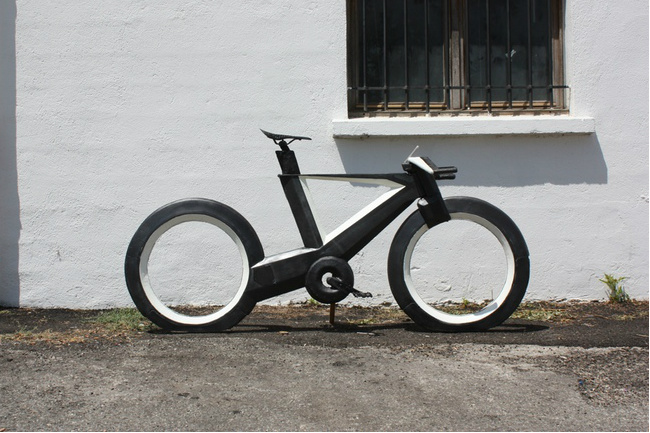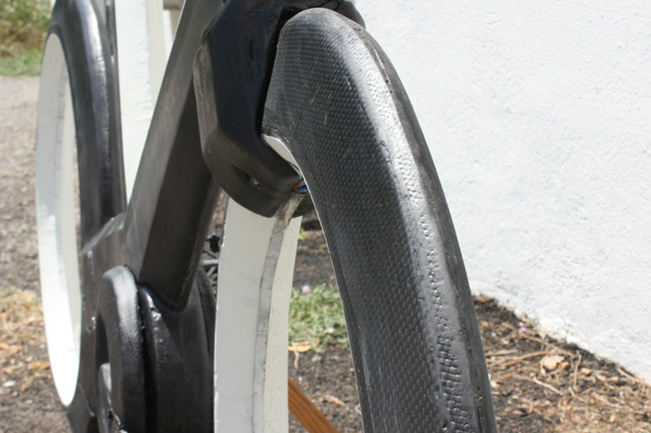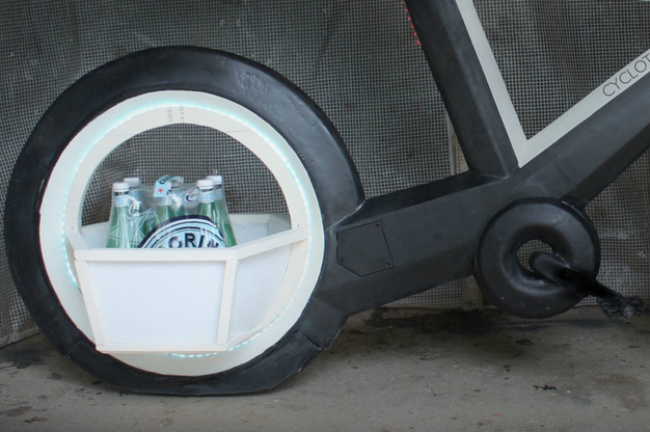Update: Approaching three years on from when we originally published this article, we’re still as excited as ever about the idea of riding a Tron-inspired bicycle. Unfortunately, right now it’s still just that: An idea. Despite an estimated delivery date of July 2016, it seems that the Cyclotron is still MIA. In their last Kickstarter update, the creators wrote that: “We’ve been very busy with the project,” but have yet to actually ship it. Hopefully that will change in time, but it’s yet another reminder of why project backers should make themselves aware of the risks inherent in Kickstarter campaigns.
Original article: Even three decades after Tron hit cinemas, its influence on futuristic design shows no signs of slowing down. The Cyclotron bicycle borrows both look and name from the science-fiction film, with a design that’s unmistakably based on the Light Cycle, namely its two illuminated, spokeless wheels.
Besides being visually striking, the wheel “halos” turn themselves on in low-light conditions, serving as an additional safety measure by increasing visibility, and can last for eight hours on battery alone. Red laser lines can optionally project out rearward to mark a “bike lane” for good measure. The wheels themselves are hubless, enabling what the designers are calling USMs, or Utility Slot Modules, which are storage containers made to fit inside the wheel where the spokes would be in the traditional wheel. While a great concept, we’re eager to find out how the added mass in the wheel will affect the gyroscopic effect.
The base Cyclotron is a manual 12-speed, but the top-of-the-line model offers far more intrigue with an electronic gearbox that can shift in under a fifth of a second, even while at a standstill. Those who just want to enjoy the ride can enable an automatic mode where the gearbox will do all the shifting for you. The Cyclotron’s drivetrain is encapsulated as part of the frame, which should do wonders for keeping out the road grime, but could be a hassle when it comes time to service the bike. Solid polymer tires require no air and are estimated to last over 6,000 miles, but we’re curious as to how the mostly-covered wheels will handle small obstacles and curbs.
The frame impresses as well, being made of a “space-grade” carbon-fiber composite. “We combined two layers of carbon fiber with an ultra lightweight core structure. This way we can use fewer layers of carbon fiber and less resin, without impairing stability,” the company said. To preserve the clean lines and enhance aerodynamics all cabling, gears, brakes, and even the battery are integrated inside the frame. The result is a bike that, while not feather light like many high-end traditional bikes, is still impressive at under 26 lbs for the electronic gearbox model.
Of course, a bike with this much mechanical tech wouldn’t be complete without an array of sensors and smartphone app integration. Bluetooth LE-enabled sensors will send real-time cycling data to the app, which will also feature coaching programs and navigation. Perhaps even more important is the GPS integration that allows for both the anti-theft features and the autonomous accident reporting service, should the rider become unresponsive. These features will require a paid subscription, though.
Cyclotron’s been developing its bike since 2012 and has long eclipsed its funding goal on Kickstarter. There are a lot of reasons to be excited, including the price. The early bird backers reserved their bikes for around $1,000, but even the non-limited price of $1,350 even for the entry-level model sounds too good to be true. We’ll have to wait until its release next summer to find out if it lives up to the hype.





